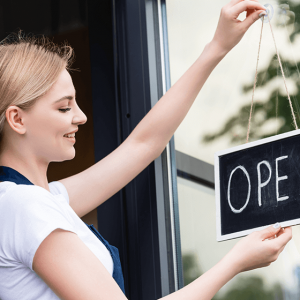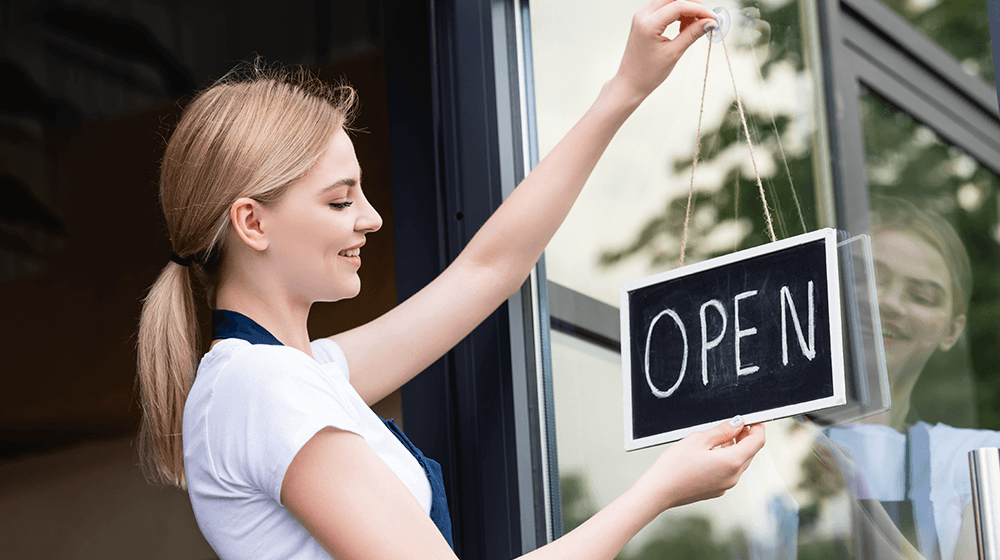Feature your business, services, products, events & news. Submit Website.
Breaking Top Featured Content:
How Restaurant Owners Are Keeping Their Doors Open During the Pandemic


It would be tough to find a business that hasn’t been negatively impacted by the pandemic. Restaurant businesses are among the hardest hit.
Ironically, although the restaurant business can be extremely competitive, owners are sharing information with the goal of helping each other survive.
One “hub” for sharing and updating information has been the Corona Virus Response Kit for Restaurants. Jim Williams, CEO of MustHaveMenus, talked to SBT about the evolution of the response kit.
First, most notably, by necessity the response kit is constantly evolving.
“We launched it in late March, and since then the Best Practices have been constantly evolving,” Williams said. “Restaurants have been united in efforts to keep all their doors open – they’re campaigning, talking to local, regional and state officials.”
“They are saying ‘let us do this,’” Williams said. “They are saying ‘Whatever the restrictions are, we can do it.”
The Response Kit helps owners keep up to date on the “moving target” that is the best practice virus response for restaurants. It’s also a place to get and share ideas about what has worked in a particular restaurant operation.
5 Action Steps to Keep Restaurants Open Amid Pandemic
Here are 5 things a local restaurant owner can do right now which can help keep their doors open amid pandemic restrictions.
1. Use Social Media
“When foot traffic to restaurants was eliminated, everyone had to step up their communication with customers,” Williams said. “Restaurants are scrambling so much just to maintain operations that sometimes there’s no time to kick back, think of strategy.”
“But you have to make that time,” he added. “More than ever, you have to learn to use social media to your advantage.”
2. Allow Pick-up and Offer Delivery
For most restaurants, providing curbside pickup or delivering food was “not their forte,” Williams said.
To adapt, restaurants have to face up to the new operational challenge. They have to get the proper packaging for “mobile” food, including takeout and delivery. For delivery, they need gear to keep the food warm (or cold) while in transit.
3. Safety Practices for Indoor Dining
Williams said he’s saddened in his travels when he sees signs in restaurant windows that read something like “Closed, See You After the Pandemic.” When is “after the pandemic”? That’s the million-dollar question.
“You need signage to direct customers so that they maintain the bottom line 6-foot distancing,” Williams said. “You need signs that instruct them to use the hand washing stations. Requirements are different at various local, regional and state levels.”
4. Update Menus
One of the focuses for Best Practices is that no materials should be shared. That includes menus. Williams said that many restaurants have opted for disposable menus, which are made from low grade, recyclable paper.
Williams said that restaurants have also used laminated menus, which are then disinfected. Some use QR codes, so that customers can view menus on their cell phones.
All of these are good options and may be best to use as a mix of options.
“Young folks have no problems staring into their phones and reading menus,” Williams said. “Your older clientele may not have adapted to that technology and would prefer to hold and read a menu.”
5. Raise Prices
“Let’s be honest,” Williams said. “Restaurants have extra costs to operate and have to adjust to those extra costs.”
Raising prices can be done strategically. The increases can be small. Months ago, restaurants and other businesses talked of adding a “coronavirus tax” but Williams doesn’t think that’s the best choice.
“We all feel taxed in a million ways,” Williams said. “I don’t think it’s a good idea to name it as an added fee.”
About MustHaveMenus
Williams is the founder of MustHaveMenus, which helps restaurants create menus and marketing materials. Williams described it as a software design tool that helps restaurants create professional products.
“There are thousands of templates – you don’t need to be a professional designer,” Williams said. “It’s more of an empowerment tool, because you can create whatever you need, from menus to signage.”
Williams said that using a standard template isn’t a good fit for most restaurants. To be and look professional, the finished product should communicate the restaurant’s brand and style.
“Every restaurant business is different, with a different style, a different need,” he said. “Many design tools are generic and have been around forever.”
MustHaveMenus allows a restaurant owner to specialize, in every layer of operation, including menus and marketing.
What Some Restaurant Owners Are Doing
- Lauriann Aladin, of The Manchester Grill in Washington state, uses MustHaveMenus Coronavirus Response Kit and talk to other restaurants frequently to understand ordinances and rules and how others are morphing to stay in business. Aladin compared this to struggling artists supporting each other, “we want to survive, but we also want other restaurants to survive.” Adin will stick with take-out-only even through the winter.
- David Forde, of Ocean 60, Atlantic Beach, Florida, uses MustHaveMenus to create 2-3 new menus per week, and is going to touchless menus (which is essential to them continuing in house dining). The touchless menus are done with a QR code posted on the table that customers scan using their smartphones, rather than touching a physical menu. Forde said this has been great for eliminating physical touch or wasting of paper and also saves a ton of time for them in printing menus.
Image: Depositphotos.com
This article, “How Restaurant Owners Are Keeping Their Doors Open During the Pandemic” was first published on Small Business Trends
